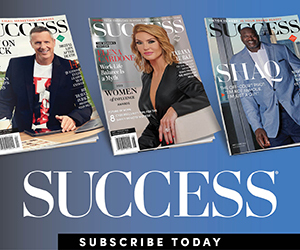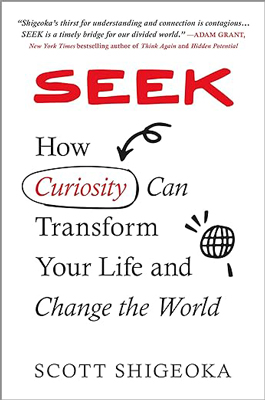When was the last time you were curious about something? When you were so interested you lost track of time? In his book, SEEK: How Curiosity Can Transform Your Life and Change the World, curiosity expert Scott Shigeoka makes the case for adults learning how to be more curious. He says curiosity doesn’t just make life more enjoyable; it deepens our connections with others, reduces our fears and anxiety and reverses our society’s isolation.
People often associate curiosity with children, but Shigeoka says people get more curious as they age. He also adds that curiosity is not a fixed state; we’re all born with it—a muscle we can develop at any point in our lives. It’s never too late to build and deepen our sense of curiosity.
The three directions of curiosity
“One of the big misconceptions is that curiosity is only an intellectual pursuit,” Shigeoka says, explaining that it typically goes in three directions: outward, inward and beyond. Outward curiosity, which is often directed at others, is what we’re most familiar with.
“Curiosity toward someone else can help you to understand their values or stories, what they care about and that makes them feel seen, heard and valued as a person,” Shigeoka says.
The second direction, inward, is directed toward ourselves: “[It’s] getting curious about myself, my emotions, my feelings, what I value in life, what relationships are serving me, which ones are harming me,” he says.
The third direction of curiosity is beyond, an interest in what lies outside the physical realm. It’s not necessarily about spirituality.
“For some folks, it might be consciousness or the spirit of interconnectedness and all life for others,” Shigeoka says. “But it could be getting curious about your ancestors who are no longer alive or about seven generations from now. What is the world that they will inherit? And how do our actions today impact their lives in their world seven generations from now?”
We’re each naturally more prone to be curious in one direction, and Shigeoka recommends practicing intentionality in the other direction. Shigeoka says to start inward if you’re unsure where to start.

“I always tell people to start from inward curiosity, get really curious and especially get deeply curious about yourself and your interior world,” Shigeoka says. “Ask yourself questions that you might ask other people. Feel what that feels like to be asked those kinds of questions or to explore those kinds of questions.”
Not only are there multiple directions our curiosity can take us, but there are also varying depths of curiosity. Shigeoka says deep curiosity requires more time and energy but brings richer outcomes. For example, you could ask someone their name, and then go even deeper and ask about the story behind their name.
How to be more curious at work
Curiosity improves our everyday life and makes our workplaces more productive, creative and collaborative. Shigeoka points out that people perceive curious leaders as more competent and trustworthy by their employees.
“If you want your team or organization to believe in you and to feel like ‘OK, I can trust this person and I like this person,’ you need to exemplify curiosity,” Shigeoka adds. He uses the DIVE model to guide leaders in curiosity audits with companies and university workplaces.
How to increase curiosity: Use the DIVE model
Detach: Let go of our assumptions, biases and certainties
“In our culture today, we cling to our assumptions and biases of others, but those assumptions can actually push people away and make them feel unseen. They can be wrong, and they can lead to conflict,” Shigeoka says. “We have to learn to detach from certainty and actually sit in the discomfort of not knowing sometimes.”
Intent: Prepare our mindset for curiosity
Shigeoka recommends not jumping straight into the conversations when diving into deep curiosity. Instead, consider your environment and setting, the questions you’re hoping to ask and signals that you should slow down or stop.
Value: See the dignity of people, including yourself
Because there is so much polarization and dehumanizing language used in social media, Shigeoka says it can be easy to forget the humanity of those who don’t believe the same things we do.
“It’s so important to start from this place of recognizing the humanity of the person that you’re being curious with, remembering that curiosity does not mean agreement,” Shigeoka says.
Embrace: Welcome the hard times in our lives
Shigeoka describes the embrace phase as welcoming the hard times, which helps us access deep curiosity because we’re not sinking into fear or anxiety.
In high-conflict situations, a culture of curiosity allows teams to navigate tensions effectively because they’ve fostered an environment where everyone feels heard. We may find a positive ripple effect as we develop our curiosity muscles. Shigeoka says, “If you’re curious, others will follow suit, especially those you supervise, because curiosity is contagious in that way.”
Photo by Yanya/Shutterstock.com





